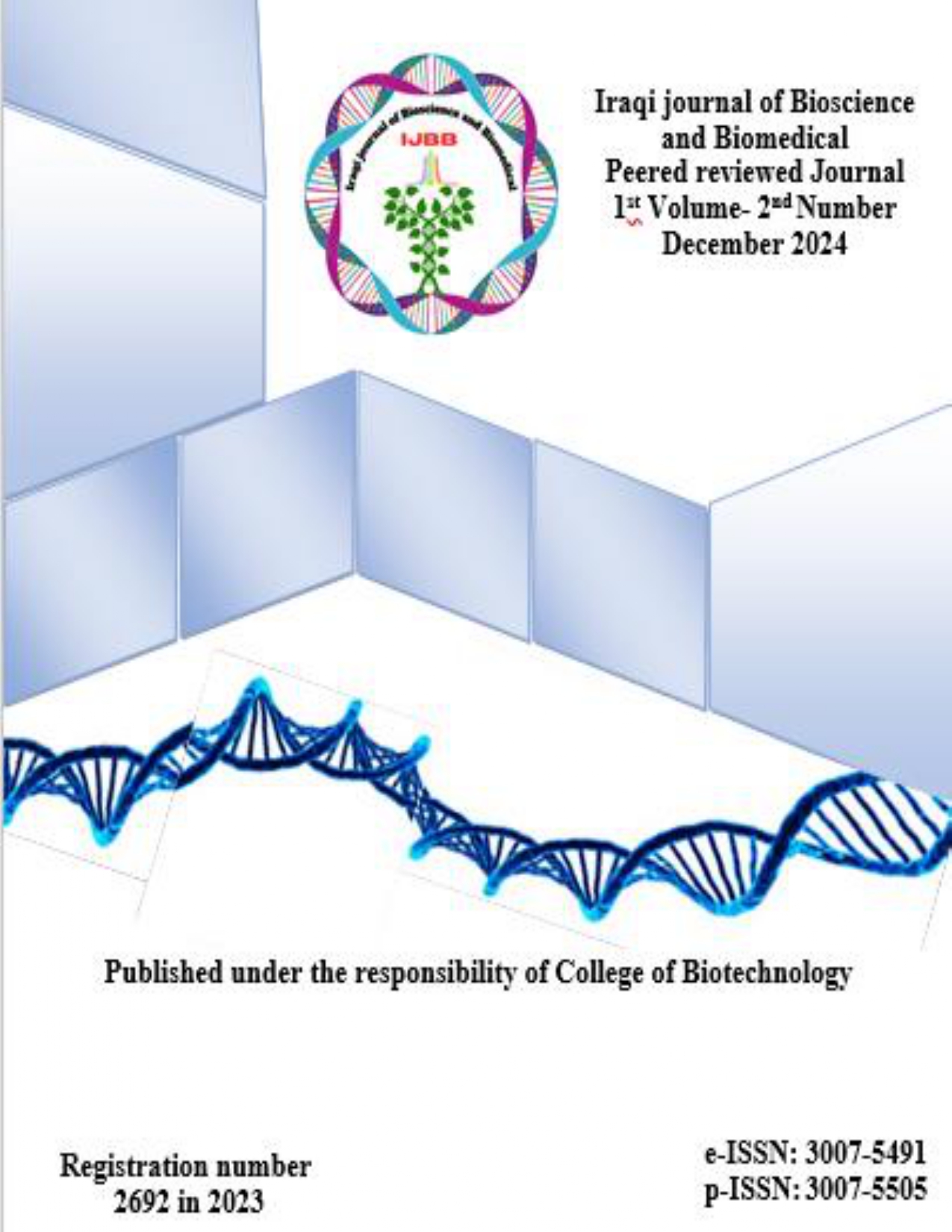Identification and MIC determination of bacterial isolates isolated from alopecia areata and skin injuries
Keywords:
Alopecia areata, Staphylococcus aureus, Pseudomonas aeruginosa, MICAbstract
The study aims to conduct a screening of the bacteria colonizing the alopecia areata disease and Pseudomonas aeruginosa bacterium that infect skin wounds and burns. Alopecia areata is an autoimmune condition characterized by localized hair loss, often influenced by both genetic and microbial factors. Patients with burns and wounds are more likely to contract an infection in the hospital than other patients due to the loss of the protective barrier (skin) and immune system disorders that appear in these patients. In this study, bacterial colonization and antimicrobial resistance in alopecia-affected areas and burns/wounds infection were investigated. Specimens were collected between October 2023 and February 2024 from three hospitals in Baghdad, including 58 specimens from alopecia cases and 64 specimens from wound and burn infections. The selected predominance bacterial infection, according to the confirmation tests were subjected to identification and antimicrobial susceptibility test using the VITEK-2 system. For alopecia the most commonly isolated species were Staphylococcus aureus which appeared in 10 isolates from 27 positive growth (35.48%), Pseudomonas aeruginosa isolates were the most commonly isolated species from burns and wounds appeared in 10 from 25 positive growth The results revealed high levels of resistance, with 90% of P. aeruginosa isolates resistant to ticarcillin and 85% to aminoglycosides, while Staphylococcus species exhibited 80% resistance to oxacillin and 70% to vancomycin. Comparative analysis between the affected and healthy scalp regions within the same patients indicated significant differences in bacterial profiles, highlighting the role of microbial communities in disease progression.
Downloads
Published
Issue
Section
License
Copyright (c) 2024 Iraqi Journal of Bioscience and Biomedical

This work is licensed under a Creative Commons Attribution-NonCommercial-NoDerivatives 4.0 International License.





